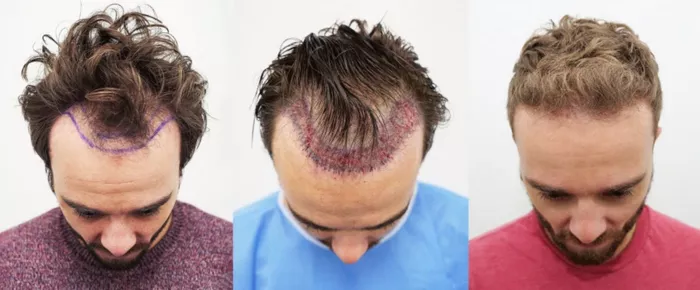Hair loss can be distressing, but thanks to advancements in medical science, hair transplants offer a viable solution for regaining lost hair. To ensure that your hair transplant journey leads to successful and natural-looking results, it’s essential to follow key strategies. In this article, we’ll delve into the expert tips on how to make your hair transplant a resounding success.
1. Choosing the Right Surgeon and Clinic:
The foundation of a successful hair transplant begins with selecting a skilled and reputable surgeon and clinic. Research their qualifications, experience, and track record in performing hair transplants. Reading patient reviews and viewing before-and-after photos can provide valuable insights into their capabilities.
2. Pre-Transplant Preparation:
Prior to the transplant, your surgeon will evaluate your hair loss pattern, donor area availability, and discuss your expectations. It’s crucial to have open and honest communication during these consultations. Your surgeon will create a customized treatment plan tailored to your needs.
3. Donor Hair Quality and Extraction:
The success of a hair transplant heavily relies on the quality of donor hair and the extraction technique. Advanced methods like Follicular Unit Extraction (FUE) and Follicular Unit Transplantation (FUT) ensure minimal scarring and a natural appearance. Your surgeon will determine the best technique based on your hair characteristics and goals.
4. Implantation Technique:
The way grafts are implanted into the recipient area significantly impacts the final result. The surgeon’s attention to detail and precision is vital in achieving a natural hairline and proper distribution of grafts. Implantation angles and density play a crucial role in mimicking natural hair growth.
5. Post-Transplant Care and Maintenance:
After the procedure, following post-transplant care instructions is pivotal. This includes gentle washing, avoiding excessive sun exposure, and refraining from strenuous activities for a certain period. Adhering to these guidelines promotes proper healing and graft survival.
6. Patience and Realistic Expectations:
Patience is a virtue when it comes to hair transplants. Hair growth takes time, and you’ll likely see shedding of transplanted hair initially. However, new hair growth will follow, and visible results will become evident within several months. Maintaining realistic expectations throughout the process is crucial for a positive experience.
7. Lifestyle and Diet:
A healthy lifestyle and balanced diet contribute to the success of your hair transplant. Nutrient-rich foods, proper hydration, and adequate sleep all support hair growth. Additionally, reducing stress levels through relaxation techniques or exercise can positively impact your results.
8. Follow-Up and Maintenance:
Regular follow-up appointments with your surgeon are essential to monitor your progress and address any concerns. They can provide guidance on how to maintain and care for your transplanted hair as it continues to grow.
See Also: FUE VS DHI hair transplant: What Is the Difference?
Conclusion
A successful hair transplant is a collaborative effort between you and your medical team. By making informed decisions, choosing a skilled surgeon, and adhering to post-transplant care, you can significantly increase the likelihood of achieving natural-looking and long-lasting results. Remember, the journey towards a restored hairline is a gradual process, and embracing patience and diligence will ultimately lead you to successful hair transplant outcomes.
FAQs
Q1: Who is a suitable candidate for a hair transplant?
A1: Individuals with stable hair loss, good overall health, and sufficient donor hair are ideal candidates. A consultation with a hair transplant specialist can determine suitability.
Q2: How can I find a reputable hair transplant surgeon?
A2: Research extensively, read reviews, and consider consulting with multiple surgeons. Look for board-certified surgeons with experience and positive patient outcomes.
Q3: What are the different types of hair transplant techniques?
A3: Two common methods are Follicular Unit Transplantation (FUT), which involves removing a strip of scalp for grafts, and Follicular Unit Extraction (FUE), which individually extracts follicles. FUE is less invasive and leaves minimal scarring.
Q4: Is a hair transplant a painful procedure?
A4: Surgeons use local anesthesia during the procedure, minimizing discomfort. Some post-operative pain and swelling are normal but can be managed with pain medication.
Q5: How long does it take to see results after a hair transplant?
A5: Transplanted hair typically falls out within a few weeks, followed by new hair growth after a few months. Significant improvements become noticeable around 6-12 months post-surgery.


